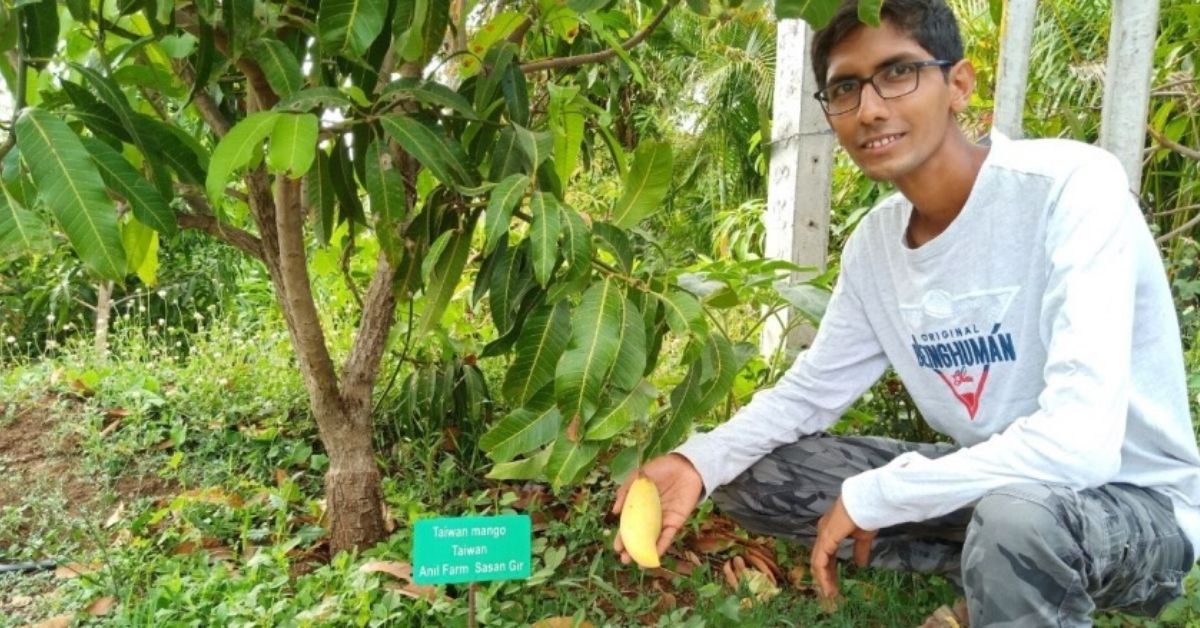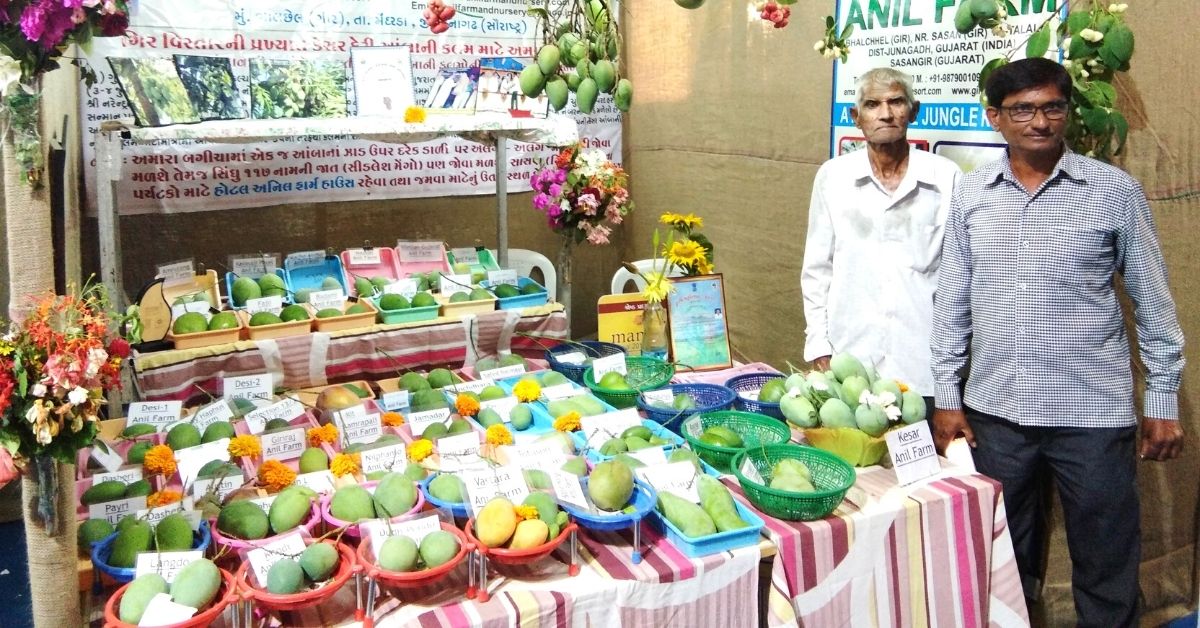Gujarat Family Creates Mango Museum; Earns Rs 24 Lakh A Year
For the past three decades, the Jhariya family from Bhalchhel village in Gir, Gujarat, have been sourcing mangoes across India to create a unique mango orchard

Located just 3 km away from the Gir forest national park in Bhalchhel village, Gujarat, lies a unique mango orchard, offering a visual treat.
Spread across 12.5 acres are thousands of mango trees bearing more than 200 varieties of the fruit from across the country. A visit to the farm will leave you in awe of the vast collection of mangoes the Jhariya family has sourced and preserved over the past three decades.
“Like Alphonso from Konkan and Dasheri variety from Uttar Pradesh, the Kesar variety of mangoes are famous from our region… In 1985, my grandfather Noor Ali Veera Jhariya migrated from neighbouring Sangodra village and purchased 10-acres of land in Bhalchhel to develop a mango orchard,” says Sumeet.
“Noor was a traditional farmer owning about six acres of land. He sold the old farm to buy more land. Since the new land was not optimum for farming and required a lot of land development and soil preparation, he could buy it at a lower price,” he tells The Better India.

Noor spent a lot of time and effort developing the land to make it fertile enough for farming. After much effort, he started growing the Kesari mango variety.
His efforts bore fruits as he earned desired profits from the mango orchard. By 1990, he even upscaled his farm activity by starting a nursery to sell saplings to farmers for additional income. Noor sold almost 10,000 saplings a year.
He was very passionate about mangoes, and his curiosity increased when he learned about other varieties of mangoes across India. “Around 1996, he started collecting different varieties of mangoes. He sourced 14 mango varieties initially and grew them in the orchard,” he explains.
Sumeet says slowly that his father, Samshuddin, also developed an interest. “Both my grandfather and father started travelling all over the country to procure different mango varieties. They inquired with experts who worked in the field, visited agriculture universities and met farmers who grew unique varieties,” he adds.
Today, the Jhariya family has 230 varieties of mangoes grown in their orchard, some of which include Chinna Rasam and Chandrama from South India, and Chaunsa, Langda and Daseri from the North. They also have dwarf mangoes and a seedless variety known as Sindhu-117. There are also other varieties which are native to the USA, Thailand, Australia, Europe and Israel. The farm also has fruit varieties such as Katimon, Bajrang Baramasi, Baramasi Valsad and others that deliver mangoes every three months.
“Visitors are often mistaken that we have developed these varieties. But it is not the case we have sourced these from people who were already growing them,” Sumeet clarifies.

Another unique aspect of their farm is that they had a tree which bore 80 varieties of mangoes. “We had grafted different varieties into a single tree. The tree flourished for years, but then it was infected by a disease and eventually, died. We are in the process of creating another such tree,” he says.
Through a unique initiative, Sumeet says procuring the varieties from different parts was a challenging feat. “My grandfather and father explored and found them in an era with no internet or Google searches to make the work easier. They relied purely on personal networking and contacts as they learned about unique mango varieties grown by farmers across India. Also, they did not sell the fruits immediately. The plants had to be grown and waited for fruits to bear to check the authenticity of the promised varieties by the concerned farmers. There have been instances when a farmer sold a particular mango variety, but it turned out entirely different when we got the fruits. Confirming the credibility becomes of utmost importance in our business, and the process takes up to four years before the fruits are sold in the market,” Sumeet informs.
He claims that all the mangoes are grown using drip irrigation to save water and organic farming methods. “Unlike the conventional plantation, which has a gap of about 30-40 feet between two trees, our mango trees are grown using a high-density plantation technique with a gap of 10-25 feet. The method allows us to grow four times the trees compared to traditional methods,” he adds.

The family has also opened its doors for visitors to experience living in the mango orchard. “We have developed Anil Farm House, an eco-tourism entity that hosts guests throughout the year. It provides guests with an opportunity to learn more about organic mangos and their authenticity,” he says.
The family also sells about 2 lakh mango saplings a year by the name Anil Mango Farms and Nursery. “Anil is my elder brother, and we take care of the entire business as a family,” he adds.
Sumeet expresses concern that many mango farmers growing a single variety for years leads to monoculture. “Mango varieties like Alphonso, Dasheri and others often pose uncertainty in productivity because there is a lack of cross-pollination between the varieties. We advise farmers who visit us for procuring saplings to adopt 10 per cent of other mango varieties to encourage cross-pollination,” he notes.
As we conclude our discussion, he compares his mango orchard to an open, ‘live’ mango museum that enables them to see and learn about the fruit across India and abroad.
Edited by Yoshita Rao
If you found our stories insightful, informative, or even just enjoyable, we invite you to consider making a voluntary payment to support the work we do at The Better India. Your contribution helps us continue producing quality content that educates, inspires, and drives positive change.
Choose one of the payment options below for your contribution-
By paying for the stories you value, you directly contribute to sustaining our efforts focused on making a difference in the world. Together, let’s ensure that impactful stories continue to be told and shared, enriching lives and communities alike.
Thank you for your support. Here are some frequently asked questions you might find helpful to know why you are contributing?


This story made me
-
97
-
121
-
89
-
167











